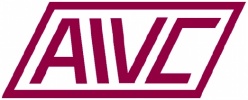The 40th AIVC conference was held on 15 and 16 October 2019 in Ghent, Belgium. It was also the 8th TightVent conference and the 6th venticool conference.
Conference Scope
In the past 40 years, since the first oil crisis in the seventies, energy and climate goals have been shaping many countries´ policy and legislative agendas. The building sector plays a crucial role in achieving these goals, considering the energy use attributed to buildings and its huge potential for improved energy performance.
Whereas in the past most of the focus was on reducing the energy consumption, it is now clear that better performing buildings must ensure an acceptable Indoor Environmental Quality (IEQ), by providing higher Indoor Air Quality (IAQ) and comfort levels for their occupants. Building ventilation entails both challenges and opportunities to achieve this goal.
In 2019 the AIVC completed its 40th year of existence and the conference organisers thought that it would be good to pay a particular interest to the evolution during these 40 years.
This was the context defining the core theme of the joint 40th AIVC, 8th TightVent and 6th venticool Conference as: “From Energy crisis to sustainable indoor climate – 40 years of AIVC".
The event placed its focus on:
- Smart ventilation, IAQ and health relationships
- Airtightness
- Ventilative cooling – Resilient cooling
The conference programme included well‐prepared and structured sessions focused on the conference topics, invited speakers, long and short oral presentations arising from the call, as well as 90 seconds industry presentations.
Conference topics
Historical evolution e.g. :
- Views on indoor environmental quality in theory and in practice
- Measurement methods
- Modelling
- Standards & regulation
- Metrics
- Systems & technology
- Occupant role
- Market trends
Smart ventilation, Indoor Air Quality (IAQ) and health relationships:
- Sensing technologies and control strategies for smart ventilation
- Smart grid integration
- Ventilation related energy use (Fan energy demand & heat recovery issues)
- Ventilation in renovated buildings
- Inspection of ventilation systems
- IAQ impacts from outdoor sources
- IAQ metrics or performance indicators
- Humidity control and moisture damage
- Strategies to reduce exposure (filtration, air cleaning, source control)
- Performance of residential cooker hoods
- BIM (Building Information Modelling) and ventilation systems
- Life Cycle Assessment
Airtightness:
- Energy and IAQ impact of envelope and ductwork leakage
- Durability of building and ductwork airtightness
- Risks related to building airtightness
- Infiltration measurement techniques and IR thermography
- Field data and case studies
- Compliance schemes and barriers to innovation
- Developments in products and systems
- Life Cycle Assessment
Ventilative cooling - Resilient cooling:
- Thermal comfort and ventilation;
- Coupling of ventilation with cooling systems;
- Ventilative cooling (design, technologies, components, controls, case studies);
- Bioclimatic architectural design towards better summer performance
- Technologies of passive cooling and overheating prevention
- Personal comfort control during the hot season
- Technologies and control strategies towards energy flexible buildings
- Life Cycle Assessment
Topical sessions
- 40 years of AIVC
- Bedroom ventilation, IAQ and sleep
- Better implementation of ventilative cooling (cooling of buildings using outside air as main source) in national (building) standards, legislation and compliance tools
- Controlling moisture for improved IAQ
- EPBD 2018/844/EU Article 19a feasibility study on the “inspection of stand-alone ventilation systems”
- Ventilation design and control in residences - current challenges, innovative solutions and case studies gathered by IEA-EBC Annex 68
- EBC Annex 78 - Supplementing Ventilation with Gas-phase Air Cleaning, Implementation and Energy Implications
- EBC Annex 80 - Resilient Cooling
- Integrating uncertainties due to wind and stack effect in declared airtightness results
- Model based control and concepts for ventilation systems
- Performance-based assessment methods for ventilation systems
- IEA EBC Annex 79: What information do we need for occupant-centric building design and operation?
- When the EPR hits the fan, or…the killing of the fan energy
Keynote speakers:
- Darryl Boyce, ASHRAE
- Sam de Craemer, University of Antwerp
- Per Heiselberg, Aalborg University
- Frank Hovorka, REHVA
- Yves Lambert, EVIA
- Mat Santamouris, University of South Wales
- Chandra Sekhar, National University of Singapore
Conference Organizers
The conference was organised by:
-
Ghent University
- INIVE, the International Network on Ventilation and Energy Performance on behalf of the Air Infiltration and Ventilation Centre (AIVC), TightVent Europe (the Building and Ductwork Airtightness Platform), and venticool (the international platform for ventilative cooling)
For further information please visit: https://www.aivc.org/event/15-16-october-2019-conference-ghent-40th-aivc-conference




